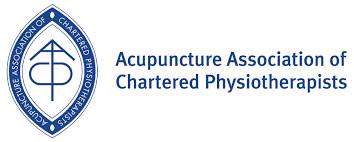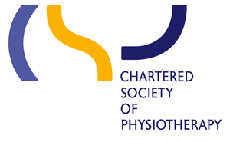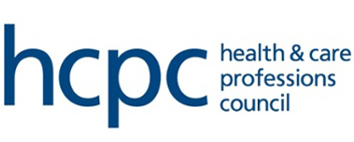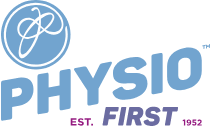For thousands of years, the ancient practice of acupuncture has been used as a method of treating pain, stiffness, and discomfort caused by any number of physical and psychological conditions. Originally derived from traditional Chinese medicine, the technique is now recognised internationally as an effective and legitimate means of therapy for a multitude of ailments.
Physical issues ranging from frozen shoulders to tension headaches are treated through acupuncture and, while the scientific evidence behind the technique is often a subject of debate in the western world, the results frequently speak for themselves.
Acupuncture is a technique commonly used to treat physical pain ranging from athletic injuries to everyday aches. Whether you are a sportsperson suffering from muscle strain, or an individual with a persistent tension headache, visiting a professional acupuncturist such as Essex Physiotherapy Clinic could be a viable treatment for you.
Acupuncture is a form of complementary therapy; in other words, it is a treatment which lies outside of mainstream medical care. Alongside acupuncture are complementary practices such as osteopathy, homoeopathy and herbal medicines. Complementary therapies have numerous benefits and can also be used alongside conventional medical treatment such as chemotherapy or radiotherapy.
The process itself involves acupuncture practitioners, or acupuncturists, inserting incredibly thin stainless steel needles into the patient’s body at multiple entrance points, known as ‘acupoints’. By inserting the needles at different locations and depths, the practitioner is able to target different areas of pain and relieve a variety of tensions.
The exact reasons for the practice’s success are still uncertain, however, most common explanations suggest it is due to the rebalancing of the body’s Qi energy (pronounced Chi) as well as the release of natural chemicals within muscle tissue.
As previously mentioned, traditional Chinese medicine explains that our bodies must maintain a state of Qi balance in order to remain healthy. The ancient Chinese held the belief that Qi flows through a multitude of pathways, or meridians, throughout the human body. By inserting needles into any of the hundreds of acupuncture points on the body, the energy flow becomes accessible and can, with the correct technique, be rebalanced.
Acupuncture points are located in a variety of regions across the skin, relative to specific indicators all over the human body. Pictographs utilised in Traditional Chinese Medicine demonstrate that these points exist as tiny holes in the skin through which the Qi energy is able to flow. As the treatment goes on, a sensation known as ‘deqi’ develops. ‘Deqi’ is characterised by a feeling of sensation and mild tingling and is not unpleasant.
The more scientifically accepted western explanation involves suggests that the puncturing of the skin plays a role in triggering the release of pain-relieving endorphins. Acupuncture points work by stimulating the individual’s central nervous system. This then leads to the release of natural chemicals into the muscular tissue, spinal cord and brain.
Typically, the aforementioned acupoints are located using electrodermal measurements. Whilst traditional Chinese medicine practitioners believe there are over 2000 acupuncture points in the human body, the World Health Organisation released a Proposed Standard International Acupuncture Nomenclature Report in 1991, outlining a total of 361 acupoints.
The most common acupoints are located on the abdomen, arms, lower legs and back. This means that during an acupuncture session, you will most likely be asked to lie down on a bed or chair and remove some items of clothing to allow easier access for the acupuncturist. The treatment itself is commonly described as a pleasant experience, allowing the individual to enter a state of relaxation. This, in turn, aids the release of tension from both the body and the mind.
Despite slightly different methods being used by different practices of acupuncture, acupoints are most commonly identified using a system of letters and numbers. The letter correlates to the certain meridian on which the point is located, and the number signifies the acupoint’s position along the meridian.
For example, HT7 corresponds to the heart channel, or ‘Shenmen’. This acupoint is positioned on the outside of the wrist and can be used to treat numerous forms of mental issues. Alternatively, the acupoint GB20 is found at the base of the skull at the point it meets the neck. Known as ‘Fengchi’, therapy involving this point can be used as a treatment for issues such as tension headaches or muscle strain.
One of the reasons that acupuncture remains such a popular and effective form of therapy, is its versatility in treating a range of ailments. Individuals suffering from a variety of physical conditions can benefit from the effects of acupuncture therapy. Those who may benefit from acupuncture sessions include sufferers of:
– Migraines
– Frozen shoulder
– Muscle strain
– Back and neck pain
– Arthritis
– Tension headache
– Rheumatism
– Sports injuries
In addition to the aforementioned injuries and ailments, acupuncture is often recommended to patients receiving cancer treatment due to the release of natural pain-relieving endorphins in the spinal cord and brain. Cancer patients may also utilise acupuncture as a means of reducing sickness associated with medication and treatment such as chemotherapy.
Of course, as with any physical therapy, there is an element of risk. However, when the process is carried out by a qualified acupuncturist, the likelihood of injury or pain is very low. Because of the minute size of the filiform needles used in acupuncture therapy, many people describe them as entirely painless. The process is often said to cause a tingling sensation, but no real discomfort. Each of the acupuncture needles is left in place for a short while (usually between 10 minutes and half an hour) before being removed. The needles themselves should always be pre-sterilised and disposed of after a single-use.
In rare cases, patients may experience mild side effects such as:
– Bruising or soreness at the points of insertion
– Light-headedness
– Infection
– Mild discomfort or pain during the process
After your acupuncture session, you may also feel tired or drowsy. However, these sensations are only temporary.
Acupuncture has numerous physical benefits. Through the targeting of certain acupoints that relate to your specific issue, acupuncturists stimulate the nerves within muscles and other tissue. This, in turn, leads to the release of endorphins that alter the way the body experiences pain.
As well as the numerous physical benefits that often come as a result of acupuncture, such as the alleviation of pain, reduction of sickness and relief of tension in soft tissue, the process is also widely recognised for its positive effects on mental health and overall wellbeing.
Not only is acupuncture a great remedy for those with physical issues, but many people also claim that the process helps them to feel relaxed and improves their feeling of calm and tranquillity.
As mentioned above, one of the greatest benefits of acupuncture is that the technique can be implemented alongside other treatments such as physiotherapy and massage therapy. The practice is also recognised as a method of treating stress, promoting better sleep, clearing inflammation and acne, and increasing productivity.
No matter the source of your issue, acupuncture could be a viable treatment.
The number of acupuncture sessions required will most likely be determined by the seriousness of your condition as well as the manner in which your body responds to the treatment.
Weekly sessions are common among acupuncture patients but it’s important to discuss your individual circumstances with your acupuncturist. If you are using acupuncture alongside another medical treatment, you should discuss your schedule with your doctor or seek advice from the NHS.
As with any form of therapy or physical treatment, it is important that you find trained professionals you can trust. Here at Essex Physiotherapy Clinic, we have a team of highly knowledgeable and experienced physical therapists who will always be happy to help. If you’re considering acupuncture or any of our other services, please don’t hesitate to get in touch.
Our staff have been serving the Chelmsford area and Epping for over 30 years. We offer a wide range of therapies and endeavour to give our clients the best experience possible. If you have any questions about acupuncture or would like to discuss treatment, email us at info@essexphysio.co.uk or call us on 01245 325 037.




